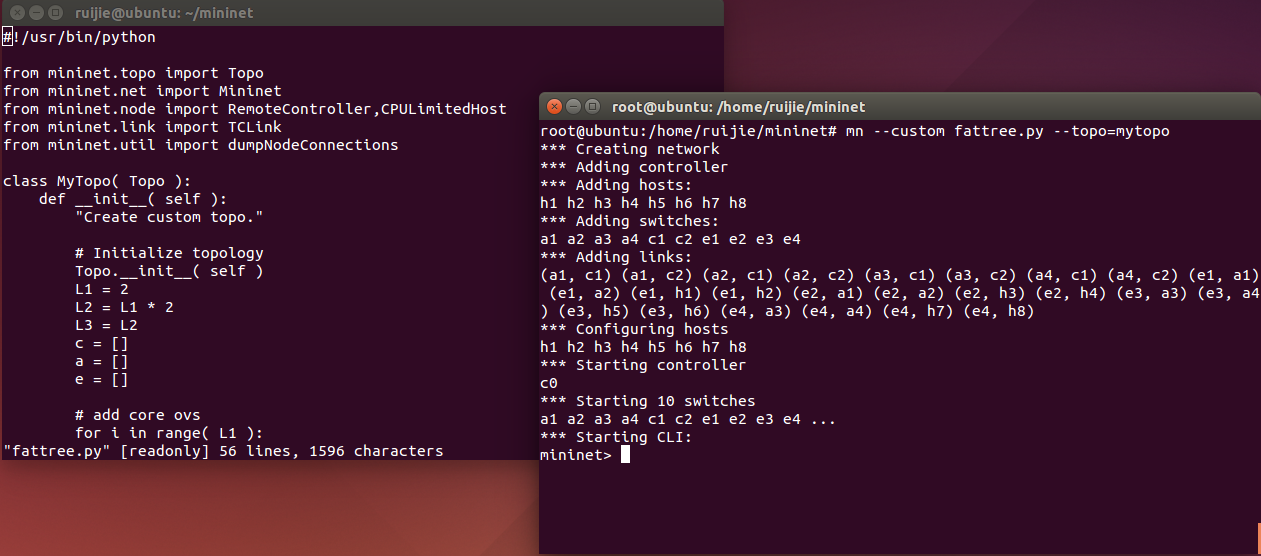1. 安装mininet
从github上获取Mininet源码并运行安装脚本
$ git clone git://github.com/mininet/mininet
$ ./mininet/util/install.sh -a
测试mininet的基本功能
$ mn --test pingall
2. 用字符命令生成拓扑,并测试连通性
目标拓扑如下
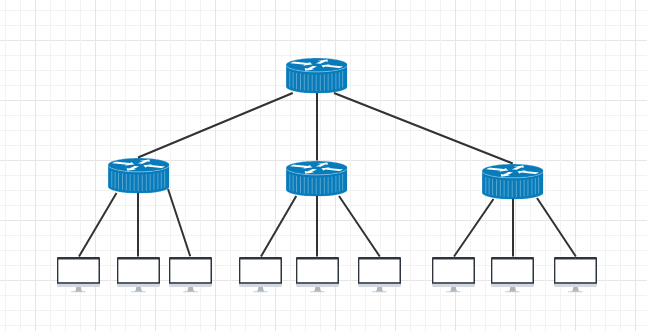
由图可知其深度为2,扇出为3,通过运行命令mn --topo tree, fanout=3,depth=2,生成并测试结果如下
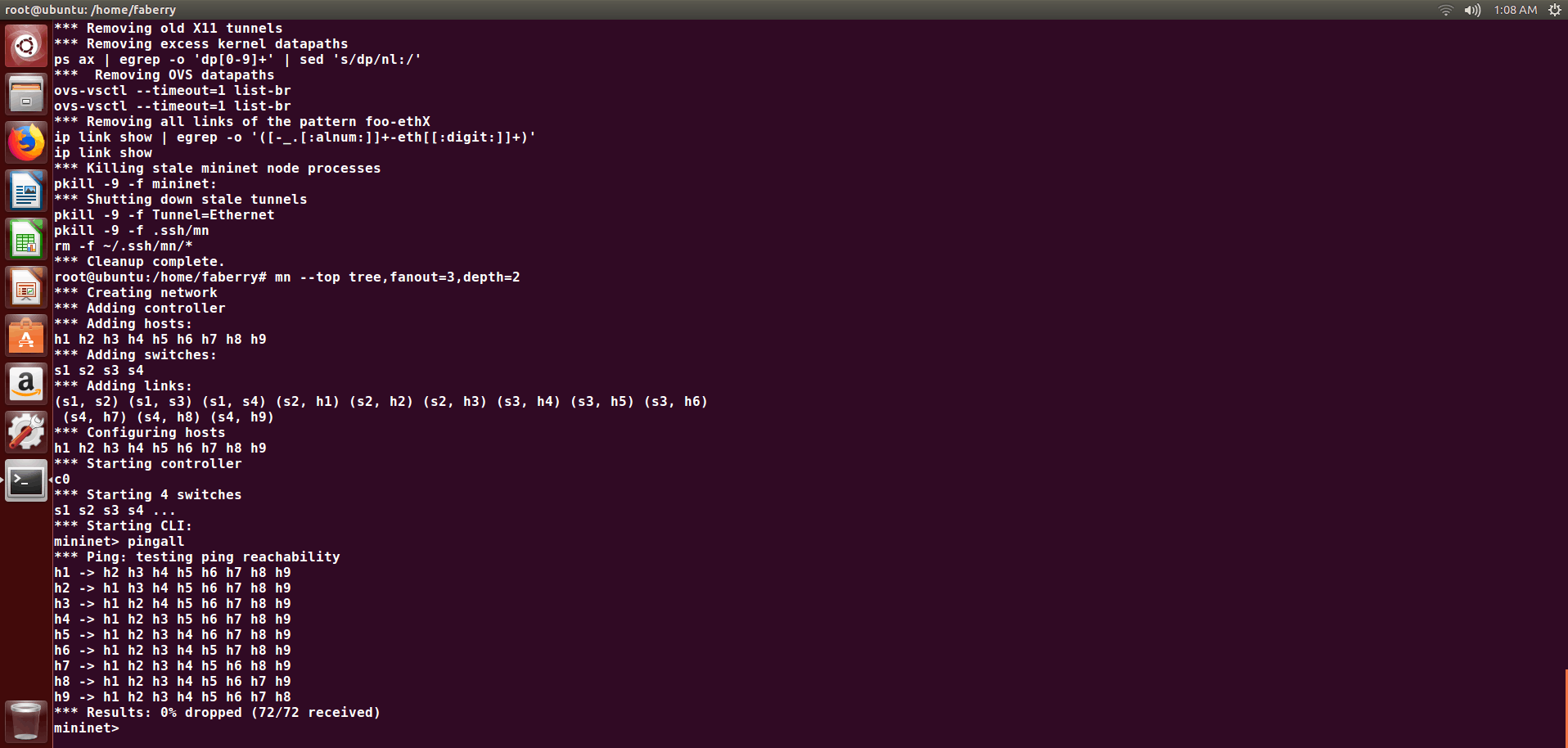
3. 用可视化界面生成拓扑,并测试连通性
使用如下命令运行MiniEdit的图形化界面
$ ./mininet/mininet/example/miniedit.py
画出如下拓扑并运行命令测试其连通性
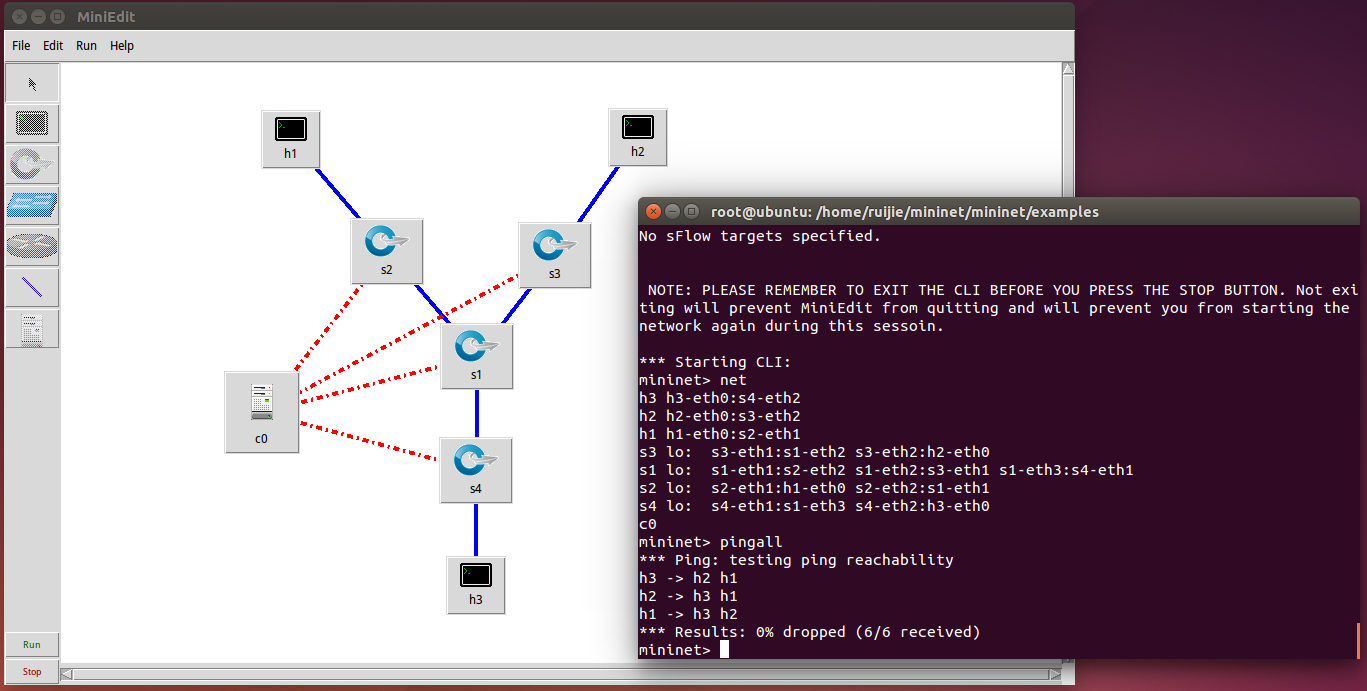
4. 用Python脚本生成一个Fat-tree型的拓扑
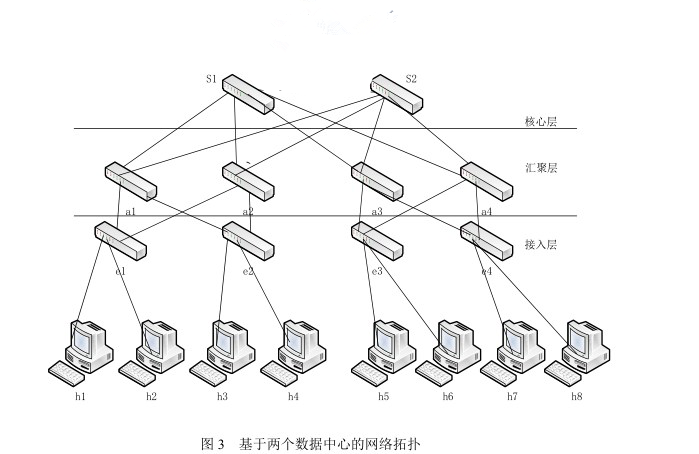
目标拓扑图如上,根据其结构,编写python代码如下
#!/usr/bin/python
from mininet.topo import Topo
from mininet.net import Mininet
from mininet.node import RemoteController,CPULimitedHost
from mininet.link import TCLink
from mininet.util import dumpNodeConnections
class MyTopo( Topo ):
def __init__( self ):
"Create custom topo."
# Initialize topology
Topo.__init__( self )
L1 = 2
L2 = L1 * 2
L3 = L2
c = []
a = []
e = []
# add core ovs
for i in range( L1 ):
sw = self.addSwitch( 'c{}'.format( i + 1 ) )
c.append( sw )
# add aggregation ovs
for i in range( L2 ):
sw = self.addSwitch( 'a{}'.format( i + 1 ) )
a.append( sw )
# add edge ovs
for i in range( L3 ):
sw = self.addSwitch( 'e{}'.format( i + 1 ) )
e.append( sw )
# add links between core and aggregation ovs
for i in range( L1 ):
sw1 = c[i]
for sw2 in a:
self.addLink( sw2, sw1 )
# add links between aggregation and edge ovs
for i in range( 0, L2, 2 ):
for sw1 in a[i:i+2]:
for sw2 in e[i:i+2]:
self.addLink( sw2, sw1 )
#add hosts and its links with edge ovs
count = 1
for sw1 in e:
for i in range(2):
host = self.addHost( 'h{}'.format( count ) )
self.addLink( sw1, host )
count += 1
topos = { 'mytopo': ( lambda: MyTopo() ) }
运行结果如图
